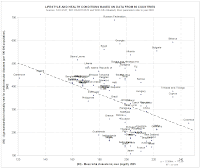Female Athlete Triad
When I was in high school, one of my best friends was a long-distance runner and a dancer. After only a few months of training, I knew something was wrong. She changed her diet to one of protein and almost no other calories. She was obsessed with exercise leading to a loss of many of her friends. Later on she lost a lot of weight and, to me, instead of becoming healthier she appeared to look pretty unhealthy. What I didn't know then was that my friend may have suffered from the "female athlete triad". It is a three-part syndrome that affects the health and performance of female athletes and includes osteoporosis, disordered eating and menstrual disorders. Each of these are inter-related and inter-play. Together they can cause serious illness or death. Writing in a review in British Medical Journal, Dr. Karen Birch explains that the syndrome can be caused by pressures psychological and physiological associated with a sports requirements to perform optimally, which can l
